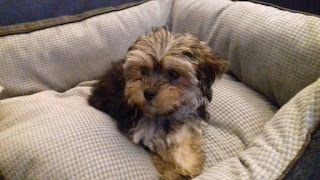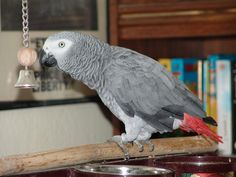The pug is a breed of dog with physically distinctive features of a wrinkly, short-muzzled face, Free Pug Puppy for sale man best friend and curled tail. The breed has a fine, glossy coat that comes in a variety of colors, How to Buy a Pug Puppy online most often fawn or black, and a compact square body with well-developed muscles.
Pugs were brought from China to Europe in the sixteenth century and were popularized in Western Europe by the House of Orange of the Netherlands, and the House of Stuart. In the United Kingdom, Find Pug Puppy for sale online in the nineteenth century, Queen Victoria developed a passion for pugs which she passed on to other members of the Royal family.
Pugs are known for being sociable and gentle companion dogs. Pug Dogs and Puppies for sale The American Kennel Club describes the breed's personality as "even-tempered and charming". Pugs remain popular into the twenty-first century, with some famous celebrity owners. Order Pug Puppy for sale in Florida A pug was judged Best in Show at the World Dog Show in 2004.
Physical characteristics
While the pugs that are depicted in eighteenth century prints tend to be long and lean, modern breed preferences are for a square cobby body, a compact form, a deep chest, and well-developed muscle. Their smooth and glossy coats can be fawn, apricot fawn, silver fawn, or black.The markings are clearly defined, and there is a trace of a black line extending from the occiput to the tail. The tail normally curls tightly over the hip.Pugs have two distinct shapes for their ears, "rose" and "button". "Rose" ears are smaller than the standard style of "button" ears, and are folded with the front edge against the side of the head. Breeding preference goes to "button" style ears.
Pugs' legs are strong, straight, of moderate length, and are set well under. Their shoulders are moderately laid back. Their ankles are strong, their feet are small, their toes are well split-up, and their nails are black. The lower teeth normally protrude further than their upper, resulting in an under-bite.
History
In ancient times, Pugs were bred to be companions for ruling families in China. The pet Pugs were highly valued by Chinese Emperors, and the royal dogs were kept in luxury and guarded by soldiers. Pugs later spread to other parts of Asia. In Tibet, Buddhist monks kept Pugs as pets in their monasteries. The breed has retained its affectionate devotion to its owners since ancient times.[3]The early history of the Pug breed has not been recorded in great detail; however, it is widely believed that the breed came from the Orient. China is the earliest known source for the breed. Similar dogs were popular in the Imperial court during the Song Dynasty.
16th and 17th centuries
Pugs were popular at European courts, and reportedly become the official dog of the House of Orange in 1572 after a Pug named Pompey saved the life of the Prince of Orange by alerting him to the approach of assassins.
A Pug travelled with William III and Mary II when they left the Netherlands to accept the throne of England in 1688. During this period, the Pug may have been bred with the old type King Charles spaniel, giving the modern King Charles Spaniel its Pug characteristics.
The breed eventually became popular in other European countries as well. Pugs were painted by Goya in Spain, and in Italy they rode up front on private carriages, dressed in jackets and pantaloons that matched those of the coachman. They were used by the military to track animals and people, and were also employed as guard dogs.
Highlights
Personality
Don't expect a Pug to hunt, guard or retrieve. Pugs were bred to be companion , and that's exactly what they do best. The Pug craves affection — and your lap — and is very unhappy if his devotion isn't reciprocated.
He tends to be a sedentary dog, content to sit in your lap as you read a book or watch a movie. This doesn't mean the Pug is a stick-in-the-mud. Au contraire. He is a playful, comical dog that enjoys living it up, and delights his owner with silly antics.
Temperament is affected by a number of factors, including heredity, training, and socialization. Puppies with nice temperaments are curious and playful, willing to approach people and be held by them. Choose the middle-of-the-road puppy, not the one who's beating up his littermates or the one who's hiding in the corner.
Always meet at least one of the parents — usually the mother is the one who's available — to ensure that they have nice temperaments that you're comfortable with. Meeting siblings or other relatives of the parents is also helpful for evaluating what a puppy will be like when he grows up.
Like every dog, the Pug needs early socialization — exposure to many different people, sights, sounds, and experiences — when they're young. Socialization helps ensure that your Pug puppy grows up to be a well-rounded dog.
Health
Pugs are generally healthy, but like all breeds, they're prone to certain health conditions. Not all Pugs will get any or all of these diseases, but it's important to be aware of them if you're considering this breed.
If you're buying a puppy, find a good breeder who will show you health clearances for both your puppy's parents. Health clearances prove that a dog has been tested for and cleared of a particular condition. In Pugs, you should expect to see health clearances from the Orthopedic Foundation for Animals (OFA) for hip dysplasia (with a score of fair or better), elbow dysplasia, hypothyroidism, and von Willebrand's disease; from Auburn University for thrombopathia; and from the Canine Eye Registry Foundation (CERF) certifying that eyes are normal. You can confirm health clearances by checking the OFA web site (offa.org).
If you're buying a puppy, find a good breeder who will show you health clearances for both your puppy's parents. Health clearances prove that a dog has been tested for and cleared of a particular condition. In Pugs, you should expect to see health clearances from the Orthopedic Foundation for Animals (OFA) for hip dysplasia (with a score of fair or better), elbow dysplasia, hypothyroidism, and von Willebrand's disease; from Auburn University for thrombopathia; and from the Canine Eye Registry Foundation (CERF) certifying that eyes are normal. You can confirm health clearances by checking the OFA web site (offa.org).
Feeding
Recommended daily amount: 1/2 to 1 cup of high-quality dry food a day, divided into two meals.
Note: How much your adult dog eats depends on his size, age, build, metabolism, and activity level. Dogs are individuals, just like people, and they don't all need the same amount of food. It almost goes without saying that a highly active dog will need more than a couch potato dog. The quality of dog food you buy also makes a difference — the better the dog food, the further it will go toward nourishing your dog and the less of it you'll need to shake into your dog's bowl.
While the Pug's first love is human attention, his second love is food. These dogs love to eat, eat, eat. This, combined with their small stature, puts them at risk for obesity. As a Pug owner, you must show great restraint. Do not indulge him with food. Feed appropriate portions, limit treats and encourage exercise.
Size
Pugs weigh between 14 and 18 pounds (male and female). Generally, they are 10 to 14 inches tall at the shoulder.
Care
Though playful and rambunctious, the Pug is a low-maintenance companion, making it ideal for older owners. Because they are a small, quiet breed and are relatively inactive when indoors, they are a good choice for apartment dwellers as well.
Their compact package belies a great deal of energy, so expect to be entertained with some goofy antics if your Pug doesn't get a walk or some playtime. They are sensitive to heat and humidity, however, so if you live in a hot or humid environment, be sure your Pug doesn't spend too much time outside.
Their compact package belies a great deal of energy, so expect to be entertained with some goofy antics if your Pug doesn't get a walk or some playtime. They are sensitive to heat and humidity, however, so if you live in a hot or humid environment, be sure your Pug doesn't spend too much time outside.
Coat Color And Grooming
Even though the coats are short, Pugs are a double-coated breed. Pugs are typically fawn-colored or black. The fawn color can have different tints, such as apricot or silver, and all Pugs have a short, flat, black muzzle.
The coat is short and smooth, but don't be deceived. Pugs shed like crazy, especially in summer. The wise Pug owner accepts this, and adjusts her wardrobe accordingly, wearing light-colored clothing that better hides hair.
Following that, regular brushing and bathing helps keep the coat in good condition and shedding to a minimum. A monthly bath is sufficient, though some owners bathe their Pugs more frequently. The Pug's small size is handy: you can drop him right in the kitchen or utility sink for a bath.
Regular nail trimming is essential, since these housedogs don't usually wear down their nails outdoors like active breeds do. It's a good idea to clean the Pug's ears every few weeks, as well.
we have Pug puppies For Sale online, so if you have been in search of a legit place to buy Pug puppies For Sale online then you are at the right store where you can order Pug puppies Sale online and get a quick respond from our customer service which operates 24/7.
If you are interested in buying Pug puppies for sale online please then send an email to travisplyer1982@gmail.com or call or text +1 (573-326-8550) and we will we will make your order of Pug puppies for sale online. easy
travisplyer1982@gmail.com or call or text +1 (573-326-8550) even contact us via WhatsApp's as well +1 (573-326-8550)


















































